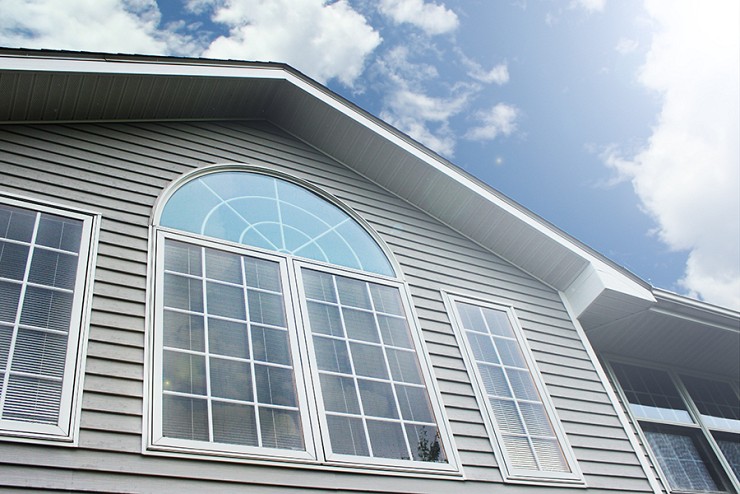Why U-Factor Matters for Your Windows In Toronto Home?

Energy efficiency is a major concern for Toronto homeowners. Living in Toronto, you know the struggle of dealing with both chilly winters and toasty summers.
Good insulation, especially in the windows, is essential to keeping your home comfortable and saving money on bills.
Windows can either trap heat inside during winter or let it in during summer. So, choosing the right windows is important for saving energy.
This is where U-Factor comes in. U-Factor is a simple rating that tells you how well a window insulates or keeps heat inside.
A lower U-Factor means better insulation. So, when choosing windows for your Toronto home, a lower U-Factor is what you want!
Stay tuned as we discuss what U-Factor is, how it works and why it matters for your windows in Toronto Home!
What Actually U-Factor Is?
You know your windows work hard to maintain a comfortable home year-round. But how to measure your window's ability to retain heat? Well, that's why U-Factor is here.
U-Factor stands for thermal transmittance. It's a measurement that tells you how well a window insulates – in other words, the rate at which heat flows through the window.
Lower U-Factor values indicate better insulating properties. It ensures less heat escapes your home in the winter and less heat enters the summer.
Essentially, windows with lower U-Factors help maintain a consistent indoor temperature, improve energy efficiency, and reduce heating and cooling costs.
How U-Factor Rating Works
U-Factor is measured in watts per square meter per Kelvin (W/m²K). This unit might seem complex at first glance, but let's break it down:
Watts (W): This unit represents the rate of heat transfer. Lower watts signify slower heat transfer, indicating better insulation.
Square Meter (m²): It refers to the area of the window being measured. Since U-Factor reflects the performance per unit area, it allows for fair comparison between windows of different sizes.
Kelvin (K): Kelvin represents temperature difference. In the context of U-Factor, it typically reflects the difference between the inside and outside temperatures.
Typical U-Factor Ranges
Different types of windows have varying U-Factor values based on their construction and materials. Here’s a comparison of typical U-Factor ranges:
| Window Type | Typical U-Factor Range (W/m²K) |
|---|---|
| Single-pane Windows | 5.0 - 6.0 |
| Double-pane Windows | 2.0 - 3.0 |
| Double-pane with Low-E | 1.2 - 2.0 |
| Triple-pane window without Low-E | 1.0 - 1.5 |
| Triple-pane with Low-E | 0.5 - 0.8 |
U-Factor vs. R-Value: What’s The Difference
Both U-Factor and R-Value are crucial concepts in understanding window performance, but they represent the same concept in slightly different ways. Here's how they relate:
R-Value:
R-Value measures a window's resistance to heat flow. It's similar to how electrical resistance in ohms (Ω) opposes electricity flow.
It is measured in units like ft²·°F/Btu or m²·K/W. Higher R-Values mean better resistance to heat transfer, which results in better insulation.
U-Factor:
U-Factor, on the other hand, flips the concept and focuses on the rate of heat transfer. Remember, lower U-Factor values indicate better performance.
The Reciprocal Relationship:
U-Factor and R-Value are mathematical reciprocals of each other. In simpler terms, you can calculate one from the other using the following formula:
R-Value = 1 / U-Factor
So, a window with a U-Factor of 1.0 would have an R-Value of 1 (1 / 1.0 = 1). This window allows heat to flow relatively easily (low resistance).
Conversely, a window with a U-Factor of 0.5 would have an R-Value of 2 (1 / 0.5 = 2), which indicates much better thermal resistance.
The Benefits of Windows with a Good U-Factor in Toronto
Windows with a good U-Factor rating offers multiple benefits for your Toronto home. It positively impacts your comfort, energy bills, and even the value of your home.
Here's a closer look at the key benefits of energy-efficient windows with good U-factor:
Reduced Utility Bills
Windows with a low U-Factor significantly lowered heat loss in winter and reduced heat gain in summer.
Such efficiency when it comes to losses in energy would be translated into lower usage. One can, therefore, expect significant savings to come from your utility bills.
Studies by the Department of Energy suggest that upgrading to Energy Star® certified windows with a good U-Factor can save up to 7% - 15% energy bills.
The cumulative savings can, over time, recover the initial investment in energy-efficient windows, making them a wise financial decision.
More Comfort
Low U-factor windows tend to hold better indoor temperature year-round. During winter, you will notice a cut in drafts and a warmer feel.
On the contrary, during the sweltering summer months, these windows will insulate your space from the sun's heat.
It makes the inside of your home cooler and more comfortable. That would further your experience in general living, be it either winter or summer.
Less Noise Transfer
Although U-Factor is principally a measure of thermal insulation, often windows rated well for their insulation quality are good at keeping noise out, too.
The benefit will be pretty helpful in a noisy city such as Toronto. Reduced noise transfer means a quiet home life. It can be especially appreciated if your residence is close to the main streets or public areas with lots of noise.
Increased Home Value
Energy efficiency is a growing priority for homebuyers. Replace those higher U-Factor windows for an assured increase in resale value for your home.
Reports from the National Association of Realtors® (NAR) indicate that a 10% increase in energy efficiency can lead to a 2.2% increase in market value.
So, it is an investment for your current living conditions and something to build on the marketability of your home for the future.
Windows with a Good U-Factor in Toronto
If you’re looking to enhance your Toronto home's energy efficiency, comfort and value, we recommend you to invest in high-performance windows.
The key to achieving these benefits lies in the various glazing options that contribute to a window's U-Factor, which measures how well a window insulates.
Here’s a look at some of the most effective glazing options:
Double-Pane vs. Triple-Pane Windows:
One of the popular glazing options is double pane and triple pane windows. But which one is better? Let’s find out!
| Feature | Double-Pane Windows | Triple-Pane Windows |
|---|---|---|
| Composition | Two layers of glass with air or gas-filled space | Three layers of glass with multiple insulating spaces |
| Insulation | Significantly better than single-pane windows | Offers even better insulation than double-pane |
| Cost | Cost-effective solution | Higher cost compared to double-pane windows |
| Energy Efficiency | Substantial improvements in energy efficiency | Best thermal performance with lower U-Factors |
| U-Factor | Typically, around 0.30 | As low as 0.15 |
| Ideal for | Suitable for most Toronto homeowners | Ideal for extreme weather conditions and cold winters |
| Comfort | Provides good insulation and comfort | Ensures a warm and comfortable indoor environment |
Low-Emissivity (Low-E) Coatings
Low-emissivity (Low-E) coatings are thin, invisible layers applied to the glass surface. These coatings reflect infrared radiation.
It helps to keep heat inside during the winter and outside during the summer. Low-E coatings can significantly improve a window’s U-Factor by controlling heat transfer.
Types of Low-E Coatings:
There are different types of Low-E coatings designed for specific needs:
- Solar Control Low-E Coatings: These are designed to reflect more solar heat, making them ideal for warm climates or south-facing windows that receive a lot of sunlight.
- Passive Low-E Coatings: These coatings are optimized to retain heat during the winter, making them suitable for colder climates like Toronto.
Inert Gas Fills:
The space between the panes in double or triple-pane windows can be filled with inert gases. Mostly, energy-efficient windows contain inert gases like Argon or Krypton instead of air.
Argon Gas Fills:
Argon is a common choice for filling the space between window panes. It is a colorless, non-toxic gas that is denser than air, which helps to reduce heat transfer through the window.
Argon gas fills are a cost-effective way to improve the insulation of double or triple-pane windows, enhancing their U-Factor.
Krypton Gas Fills:
Krypton is an even denser gas than argon and provides superior insulation. Although more expensive, krypton gas fills offer better thermal performance.
So, it’s a great choice for homeowners seeking maximum energy efficiency. Krypton-filled windows can achieve lowest U-Factors, which makes it highly effective in extreme climates.
How To Choose The Right Combination
The optimal combination of glazing options depends on your specific needs and budget. Consider factors like:
Toronto's Climate:
Given Toronto's distinct climate with both cold winters and hot summers, windows with a good balance of heat loss prevention and heat gain control are ideal.
Budget:
Double-pane windows with Low-E coatings offer a balance of window style, and performance. The replacement cost of Double-pane windows is also affordable.
Triple-pane windows with advanced coatings and gas fills provide the best insulation but come at a higher cost.
Window Location:
For south-facing windows that receive a lot of sunlight, prioritize features that control heat gain, such as Low-E coatings specifically designed for solar control.
Conclusion
Choose windows with a good U-Factor for your Toronto home. It’s not just about energy efficiency; it's about creating a more comfortable and cost-effective home.
Windows with a good U-Factor means more savings on your energy bills. Beyond cost savings, you'll enjoy a more consistent and comfortable living environment.
Don't settle for drafty discomfort and high energy bills. Upgrade your Toronto home with Delco Windows and experience the long-term benefits of U-Factor excellence.
Contact Delco Windows today for a free consultation and see how we can help you create a more comfortable and energy-efficient home.











